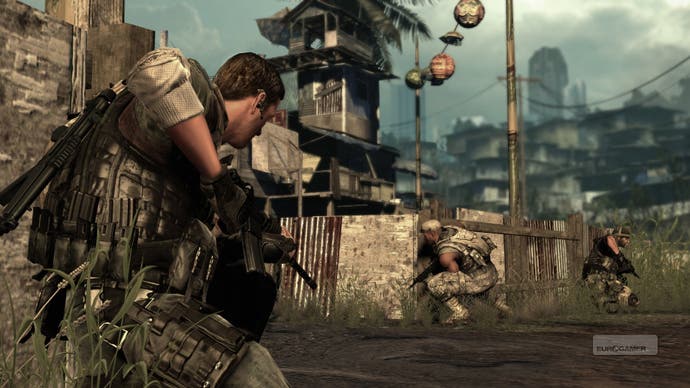PlayStation Move: SOCOM 4
The series' producer speaks.
As it states in the Geneva Convention, probably, you can't put a motion controller on shop shelves without at least 487 mini-game compilations to sit next to it. So it was with the Wii, and so it shall be when PlayStation Move and Project Natal launch later this year.
But at a press event in London last week, Sony was keen to point out that its new toy isn't just there to act as a virtual table tennis bat or cheerleading pom-pom. You'll also be able to use Move to play serious games, such as the next instalment in tactical shooter series SOCOM.
We got to try it out at GDC, as you'll know if you read our hands-on preview. And just last week, we sat down with European SOCOM producer Elliott Martin to find out more about how the game works with Move - and whether SOCOM buffs care anyway. Here's what he had to say.
When production began on the new SOCOM it wasn't being made as a Move title. Then momentum around Move picked up and Zipper Interactive was asked to try it out. Initially they thought it would be quite a difficult process, perhaps involving lots of redesigns, but they pretty much plugged it in and it worked from the get-go. They were pleasantly surprised.
As you know, games like SOCOM are very hardcore. It's difficult for some people to pick up that kind of game because of the two sticks, having to move your character and control your viewpoint and so on. We've found the Move removes that barrier and allows people to interface with the game in a much more natural, intuitive way.
Demoing the game, I've noticed people get into it much quicker. That means it's not just restricted to the hardcore market - the hope is it will broaden the audience for SOCOM.

Traditionally your weapon reticule would be fixed in the centre of the screen and you'd be moving your whole viewpoint. With Move your reticule is loose, and that's what you're moving around the screen. The game's intelligent enough to understand that, so when you move to the extremities of the screen it will pan in that direction.
That leaves your other hand free to move your character around with the sub-controller. The effect is like a light gun, but unlike on-rails light-gun games, you have the freedom to move where you want.
I use that as an example of how it will appear on the screen. That's not the same as saying that's how the game is played. I don't think it is dated. You're right, it's something we've seen before, but with the Move it's a very different proposition.
It's not limited to what you're doing with the reticule on the screen - it's also the technology inside the controller, which allows you a great degree of precision, and can measure the speed with which it's being moved and its orientation. These are all things that competing platforms can't necessarily do all in one package.
Zipper has been playing with the idea of using gestures to control some of the in-game functions. Just to give you an example, maybe throwing a grenade instead of pressing a button to throw a grenade... That's not to say that feature is in the code, but having the Move implementation up and running so quickly allows Zipper to experiment and see where the technology leads them.
So there's a lot more to it. It's not just moving your sight, aiming and firing.








